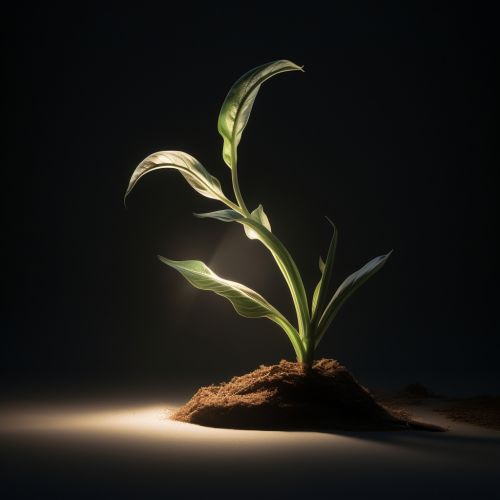Mechanisms of Phototropism in Plants
Introduction
Phototropism is a growth response in plants initiated by light direction. It is a key factor in ensuring that plants can maximize their photosynthetic capabilities by orienting their leaf surfaces perpendicular to the light source. This article explores the mechanisms of phototropism in plants, delving into the molecular and cellular processes that underpin this fascinating phenomenon.


Photoreceptors and Phototropism
Plants perceive light through specialized proteins known as photoreceptors. Photoreceptors absorb light and initiate signaling pathways that lead to various light-dependent responses, including phototropism. The two primary photoreceptors involved in phototropism are phototropins and cryptochromes.
Phototropins
Phototropins are blue-light receptors that play a central role in phototropism. They are flavoproteins that contain two light, oxygen, or voltage (LOV) domains, LOV1 and LOV2. Upon absorption of blue light, a covalent bond forms between a flavin mononucleotide (FMN) chromophore and a nearby cysteine residue within the LOV domain. This leads to a conformational change in the phototropin protein, activating its kinase domain and initiating a signaling cascade that results in phototropic curvature.
Cryptochromes
Cryptochromes are another class of blue-light receptors that contribute to phototropism. They are structurally related to photolyases, enzymes that repair UV-induced DNA damage. Cryptochromes absorb blue light through their flavin adenine dinucleotide (FAD) chromophore, leading to a conformational change that allows them to interact with other proteins and initiate signaling pathways.
Auxin and Phototropism
Auxin, a plant hormone, plays a crucial role in phototropism. It is synthesized in the apical meristem and transported down the stem in a process known as polar auxin transport. The differential distribution of auxin on the shaded and illuminated sides of a plant stem is a key factor driving phototropic curvature.
Auxin Synthesis and Transport
Auxin is synthesized from tryptophan in a two-step process. The first step is catalyzed by tryptophan aminotransferase (TAA) enzymes, and the second step is catalyzed by YUCCA flavin monooxygenases. Once synthesized, auxin is transported from cell to cell by a group of transport proteins known as PIN-FORMED (PIN) proteins. These proteins are asymmetrically localized within cells, allowing for directional auxin transport.
Auxin Perception and Signaling
Auxin is perceived by a coreceptor complex consisting of an F-box protein TRANSPORT INHIBITOR RESPONSE 1 (TIR1) and an AUXIN/INDOLE-3-ACETIC ACID (Aux/IAA) protein. When auxin levels are high, TIR1 binds to Aux/IAA proteins, leading to their degradation and the activation of auxin-responsive genes. This results in a variety of growth responses, including cell elongation, which is a key component of phototropic curvature.
Phototropic Signaling Pathways
The signaling pathways that link light perception to auxin-mediated growth responses are complex and involve a number of different proteins. Two key components of these pathways are the phototropins and the cryptochromes.
Phototropin Signaling
Upon activation by blue light, phototropins undergo autophosphorylation and interact with various downstream signaling components. One of these components is NONPHOTOTROPIC HYPOCOTYL 3 (NPH3), a protein that is required for phototropin-mediated phototropism. NPH3 interacts with ROOT PHOTOTROPISM 2 (RPT2), another key player in phototropin signaling.
Cryptochrome Signaling
Cryptochromes, upon activation by blue light, undergo a conformational change that allows them to interact with SUPPRESSOR OF PHYA-105 (SPA1). This interaction leads to the degradation of CONSTITUTIVE PHOTOMORPHOGENIC 1 (COP1), a protein that suppresses light signaling. The degradation of COP1 allows for the activation of light-responsive genes and the initiation of phototropic responses.
Conclusion
Phototropism is a complex process that involves the interplay of light perception, hormone signaling, and cellular growth responses. Through the coordinated actions of photoreceptors, auxin, and various signaling components, plants are able to orient their growth towards light, maximizing their photosynthetic capabilities and enhancing their survival in diverse light environments.
